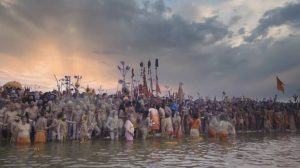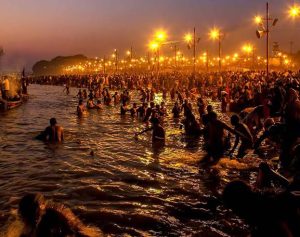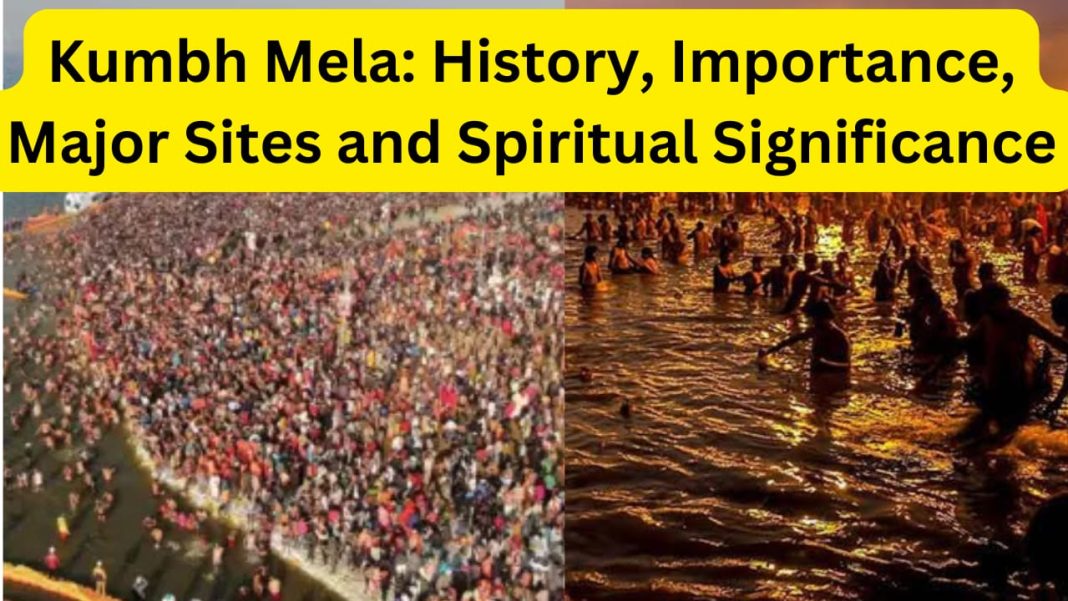Digital News Desk:
Kumbh Mela is one of the largest and most significant religious gatherings in the world, attracting millions of devotees and tourists to India. This grand festival, celebrated every 12 years, is rooted in ancient Hindu mythology and holds immense spiritual importance. Kumbh Mela is not just a religious event but a cultural phenomenon that showcases India’s rich traditions, diversity, and the essence of spirituality.
Historical Background
The origins of Kumbh Mela can be traced back to ancient Hindu texts, particularly the Puranas, which narrate the story of the Samudra Manthan (the churning of the ocean). According to the legend, the Devas (gods) and Asuras (demons) collaborated to churn the ocean in search of amrita (the nectar of immortality). As they churned the ocean, a pot (kumbh) filled with amrita emerged. To prevent it from falling into the hands of the Asuras, Lord Vishnu disguised himself as a beautiful woman, Mohini, and distributed the nectar to the Devas.
During this cosmic event, drops of amrita fell at four locations: Haridwar, Prayagraj (Allahabad), Ujjain, and Nashik. These locations became the sites for Kumbh Mela, which is held in rotation among them every 12 years. The Kumbh Mela thus serves as a celebration of this celestial event, and it is believed that taking a holy dip in the waters of these sacred rivers during the festival can wash away sins and grant salvation.

Major Kumbh Mela Sites
Kumbh Mela is celebrated at four primary locations, with each site hosting the festival in a cyclic manner:
- Haridwar: Situated on the banks of the Ganges River, Haridwar is one of the holiest cities in India. Kumbh Mela is held here when the sun is in Aries, and Jupiter is in Aquarius. The Ganges is believed to be especially potent during this time.
- Prayagraj (Allahabad): The confluence of the Ganges, Yamuna, and the mythical Saraswati rivers makes Prayagraj a significant pilgrimage site. Kumbh Mela is celebrated here when the sun is in Aries and Jupiter is in Taurus.
- Ujjain: Located in Madhya Pradesh, Ujjain is known for the Mahakaleshwar Jyotirlinga temple. The Kumbh Mela here takes place when the sun is in Aries and Jupiter is in Leo.
- Nashik: Nashik, known for its vineyards and temples, is situated on the banks of the Godavari River. The Kumbh Mela occurs here when the sun is in Aries and Jupiter is in Scorpio.
Spiritual Significance
The Kumbh Mela is not merely a religious event; it embodies profound spiritual significance. Devotees believe that participating in the Kumbh Mela and taking a dip in the sacred waters can purify their souls, cleanse them of sins, and grant liberation (moksha). The festival serves as an opportunity for spiritual renewal, reflection, and connection with the divine.
One of the central rituals during Kumbh Mela is the shahi snan, or royal bath, which involves various sects of sadhus (ascetics) and saints taking a holy dip in the waters. This moment is considered highly auspicious and draws millions of spectators. The presence of spiritual leaders and saints adds to the festival’s sanctity, as their blessings are believed to bestow divine grace on the devotees.

Cultural and Social Impact
Beyond its religious significance, Kumbh Mela is a vibrant cultural festival that showcases the diversity and unity of Indian traditions. The event attracts not just Hindus, but people from all walks of life, irrespective of caste, creed, or religion. It is a melting pot of languages, customs, and beliefs, fostering a sense of communal harmony and understanding.
The festival also provides a platform for various art forms, including music, dance, and folk performances. Traditional crafts, local cuisine, and spiritual literature are prominently featured, contributing to the cultural richness of the event. This cultural amalgamation enhances the spirit of togetherness and shared faith among participants.
Modern-Day Kumbh Mela
In recent years, Kumbh Mela has gained international recognition and attracts not only Indian pilgrims but also foreign tourists. The Indian government has made significant efforts to facilitate the smooth conduct of the festival, including enhanced infrastructure, sanitation, and security measures.
The 2019 Kumbh Mela held in Prayagraj set a world record, for the largest crowd management, largest sanitation drive and largest painting exercise of public sites, with approximately 240 million pilgrims participating over the course of the festival. The event was organized with a focus on environmental sustainability and inclusivity, making it a model for future gatherings.
You May Also Read: Top 5 Smartphones Under Rs 15,000 to Buy This Diwali 2024: Best Picks for Performance, Camera, and Battery Life








